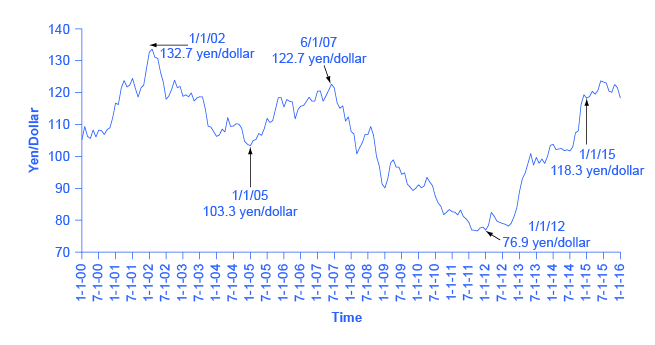Contents:


The Bretton Woods arrangements were largely adhered to and ratified by the participating governments. It was expected that national monetary reserves, supplemented with necessary IMF credits, would finance any temporary balance of payments disequilibria. Keynes’ proposals would have established a world reserve currency (which he thought might be called “bancor”) administered by a central bank vested with the power to create money and with the authority to take actions on a much larger scale. A new international monetary system was forged by delegates from forty-four nations in Bretton Woods, New Hampshire, in July 1944.
Discussions were largely dominated by the interests of the two great economic superpowers of the time, the United States and Britain. But these two countries were far from united in their interests, with Britain emerging from the war as a major debtor nation and the U.S. poised to take on the role of the world’s great creditor. Wanting to open the world market to its exports, the U.S. position, represented by Harry Dexter White, prioritized the facilitation of freer trade through the stability of fixed exchange rates. Britain, represented by John Maynard Keynes and wanting the freedom to pursue autonomous policy goals, pushed for greater exchange rate flexibility in order to ameliorate balance of payments issues. In contrast, upon the creation of Bretton Woods, with the U.S. producing half of the world’s manufactured goods and holding half its reserves, the twin burdens of international management and the Cold War were possible to meet at first.
- The Bretton Woods Agreement was a 1944 meeting of the Allied nations, in which the nations agreed to peg their currencies to the dollar while the dollar was pegged to gold.
- Subsequently, both institutions have continued to maintain their founding goals while also transitioning to serve global government interests in the modern-day.
- Explain the three types of movements or flows within international economic exchange.
- This, in the view of neoclassical economists, represented the point where holders of the dollar had lost faith in the ability of the U.S. to cut budget and trade deficits.
Countries were required to monitor and maintain their currency pegs which they achieved primarily by using their currency to buy or sell U.S. dollars as needed. The Bretton Woods System, therefore, minimized international currency exchange rate volatility which helped international trade relations. More stability in foreign currency exchange was also a factor for the successful support of loans and grants internationally from the World Bank.
When joining the IMF, members are assigned “quotas” that reflect their relative economic power—and, as a sort of credit deposit, are obliged to pay a “subscription” of an amount commensurate with the quota. They pay the subscription as 25% in gold or currency convertible into gold and 75% in their own currency. In the case of balance of payments imbalances, Keynes recommended that both debtors and creditors should change their policies. As outlined by Keynes, countries with payment surpluses should increase their imports from the deficit countries, build factories in debtor nations, or donate to them—and thereby create a foreign trade equilibrium. Thus, Keynes was sensitive to the problem that placing too much of the burden on the deficit country would be deflationary. United States allies—economically exhausted by the war—needed U.S. assistance to rebuild their domestic production and to finance their international trade; indeed, they needed it to survive.
President Lyndon B. Johnson to pay for it and its Great Society programs through taxation resulted in an increased dollar outflow to pay for the military expenditures and rampant inflation, which led to the deterioration of the U.S. balance of trade position. Meanwhile, the pressure on government reserves was intensified by the new international currency markets, with their vast pools of speculative capital moving around in search of quick profits. Officially established on 27 December 1945, when the 29 participating countries at the conference of Bretton Woods signed its Articles of Agreement, the IMF was to be the keeper of the rules and the main instrument of public international management.
Describe the factors taht led to the end of bretton woods system and the beginning of globalisation?
The https://1investing.in/ was to be a specialized agency of the United Nations, charged with making loans for economic development purposes. Britain in the 1930s had an exclusionary trade bloc with nations of the British Empire known as the “Sterling Area”. If Britain imported more than it exported to such nations, recipients of pounds sterling within these nations tended to put them into London banks.
What Is the Gold Standard? Definition & History – TheStreet
What Is the Gold Standard? Definition & History.
Posted: Thu, 27 Apr 2023 14:24:51 GMT [source]
In turn, the what is meant by the britain woods agreement was pegged to the price of gold, and the U.S. became dominant in the world economy. While the Bretton Woods System came to an end in the 1970s, both the IMF and World Bank have remained strong pillars for the exchange of international currencies. I have been hired by the colonisers under a contract which included wrong information regarding the place of work, mode of travel and living and working conditions.
NCERT Solutions for Class 10 Social Science History Chapter 3 The Making of a Global World: Download in PDF
Meanwhile, to bolster confidence in the dollar, the U.S. agreed separately to link the dollar to gold at the rate of $35 per ounce. At this rate, foreign governments and central banks could exchange dollars for gold. Bretton Woods established a system of payments based on the dollar, which defined all currencies in relation to the dollar, itself convertible into gold, and above all, “as good as gold” for trade.
The recommendation was later embodied in the proposed International Trade Organization to establish rules and regulations for international trade. Conference on Trade and Employment , but the charter was not ratified by the U.S. The less ambitious General Agreement on Tariffs and Trade was adopted in its place. However, in 1995, the Uruguay Round of GATT negotiations established the World Trade Organization as the replacement body for GATT. The GATT principles and agreements were adopted by the WTO, which was charged with administering and extending them.
Yet such guesswork suggests the possibilities of long-distance cultural contact even in the pre-modern world. This agreement was signed between the world powers in July 1944 at Mount Washington Hotel situated in Bretton Woods in New Hampshire, USA. The Bretton Woods Conference led to the establishment of the IMF and the IBRD , which remain powerful forces in the world economy as of the 2020s.
Paralysis of international monetary management
These moves helped alleviate the shortage of dollars and restored competitive balance by reducing the U.S. trade surplus. The roughly three decades that coincided with the monetary arrangements of the Bretton Woods system is often thought of as a time of relative stability, order, and discipline. The Bretton Wood Conference established the International Monetary Fund to deal with external surplus and deficits of its member nations.
A decrease in the value of a country’s money was called a devaluation, while an increase in the value of the country’s money was called a revaluation. Imbalances in international trade were theoretically rectified automatically by the gold standard. A country with a deficit would have depleted gold reserves and would thus have to reduce its money supply. The resulting fall in demand would reduce imports and the lowering of prices would boost exports; thus the deficit would be rectified.
Instead, they agreed to contribute to a fixed pool of national currencies and gold to be held by the IMF. Each member country of the Bretton Woods system was then entitled to borrow what it needed, within the limits of its contributions. White’s plan for a new institution was one of more limited powers and resources. It reflected the concerns that much of the financial resources of the Clearing Union envisioned by Keynes would be used to buy American goods, resulting in the United States holding the majority of bancor. Rather than issue a new currency, it would be funded with a finite pool of national currencies and gold of $5 million that would effectively limit the supply of reserve credit.
What Could Replace the US Dollar as World Reserve Currency? – Barchart
What Could Replace the US Dollar as World Reserve Currency?.
Posted: Fri, 28 Apr 2023 19:24:00 GMT [source]
The US has an effective right of veto over key IMF and World Bank decisions. Meeting in December 1971 at the Smithsonian Institution in Washington, D.C., the Group of Ten signed the Smithsonian Agreement. The U.S. pledged to peg the dollar at $38/ounce with 2.25% trading bands, and other countries agreed to appreciate their currencies versus the dollar. The group also planned to balance the world financial system using special drawing rights alone.
With the Smithsonian Agreement, member countries anticipated a return flow of dollars to the U.S, but the reduced interest rates within the United States caused dollars to continue to flow out of the U.S. and into foreign central banks. The inflow of dollars into foreign banks continued the monetization of the dollar overseas, defeating the aims of the Smithsonian Agreement. As a result, the dollar price in the gold free market continued to cause pressure on its official rate; soon after a 10% devaluation was announced in February 1973, Japan and the EEC countries decided to let their currencies float. This proved to be the beginning of the collapse of the Bretton Woods System.

Every country at the conference was entitled to send delegates to all meetings of the commissions and the “standing committees”, but other committees and subcommittees had restricted membership, to allow them to work more efficiently. Except when registering final approval or disapproval of proposals, the work of the conference generally proceeded by negotiation and informal consensus rather than by formal voting. The Balance uses only high-quality sources, including peer-reviewed studies, to support the facts within our articles.
Though the Bretton Woods conference itself took place over just three weeks, the preparations for it had been going on for several years. The primary designers of the Bretton Woods System were the famous British economistJohn Maynard Keynesand American Chief International Economist of the U.S. Keynes’ hope was to establish a powerful global central bank to be called the Clearing Union and issue a new international reserve currency called the bancor. White’s plan envisioned a more modest lending fund and a greater role for the U.S. dollar, rather than the creation of a new currency. In the end, the adopted plan took ideas from both, leaning more toward White’s plan.
Those at Bretton Woods envisioned an international monetary system that would ensure exchange rate stability, prevent competitive devaluations, and promote economic growth. Although all participants agreed on the goals of the new system, plans to implement them differed. To reach a collective agreement was an enormous international undertaking. Preparation began more than two years before the conference, and financial experts held countless bilateral and multilateral meetings to arrive at a common approach. Reinforcing the relative decline in U.S. power and the dissatisfaction of Europe and Japan with the system was the continuing decline of the dollar—the foundation that had underpinned the post-1945 global trading system.
The Collapse of the Bretton Woods System
After the agreement was signed, America was the only country with the ability to print dollars. There was a need to address the lack of cooperation that existed among the countries and to stop the devaluation of the currencies as well. The design of the Bretton Woods System was such that nations could only enforce convertibility to gold for the anchor currency—the United States dollar. Rather than full convertibility, the system provided a fixed price for sales between central banks. For the Bretton Woods system to remain workable, it would either have to alter the peg of the dollar to gold, or it would have to maintain the free market price for gold near the $35 per ounce official price. The greater the gap between free market gold prices and central bank gold prices, the greater the temptation to deal with internal economic issues by buying gold at the Bretton Woods price and selling it on the open market.
Threats to the dollar’s dominance are overblown – Financial Times
Threats to the dollar’s dominance are overblown.
Posted: Wed, 19 Apr 2023 07:00:00 GMT [source]
Essentially, the agreement called for the newly created IMF to determine the fixed rate of exchange for currencies around the world. The discipline of a gold standard and fixed exchange rates proved to be too much for rapidly-growing economies at varying levels of competitiveness. With the demonetizationof gold and the move to floating currencies, the Bretton Woods era should be regarded as a transitional stage from a more disciplinary international monetary order to one with significantly more flexibility.
Any country experiencing inflation would lose gold and therefore would have a decrease in the amount of money available to spend. John Maynard Keynes first proposed the ICU in 1941, as a way to regulate the balance of trade. His concern was that countries with a trade deficit would be unable to climb out of it, paying ever more interest to service their ever-greater debt, and therefore stifling global growth. The ICU would effectively be a bank with its own currency (the “bancor”), exchangeable with national currencies at a fixed rate. It would be the unit for accounting between nations, so their trade deficits or surpluses could be measured by it.
The government did not decrease their taxes due to which peasants’ indebtedness increased all across India. In these depression years, India became an exporter of precious metals, notably gold. In 1971 more and more dollars were being printed in Washington, then being pumped overseas, to pay for government expenditure on the military and social programs. Unusually, this decision was made without consulting members of the international monetary system or even his own State Department, and was soon dubbed the Nixon Shock. By 1968, the attempt to defend the dollar at a fixed peg of $35/ounce, the policy of the Eisenhower, Kennedy and Johnson administrations, had become increasingly untenable. In 1967, the IMF agreed in Rio de Janeiro to replace the tranche division set up in 1946.
The dollar itself was anchored to gold at a fixed price of $35 per ounce of gold. Gold reserves remained depleted due to the actions of some nations, notably France, which continued to build up their own gold reserves. The United States was running large balance of trade surpluses, and U.S. reserves were immense and growing. Even though all nations wanted to buy U.S. exports, dollars had to leave the United States and become available for international use so they could do so. In other words, the United States would have to reverse the imbalances in global wealth by running a balance of trade deficit, financed by an outflow of U.S. reserves to other nations (a U.S. financial account deficit). The U.S. could run a financial deficit by either importing from, building plants in, or donating to foreign nations.